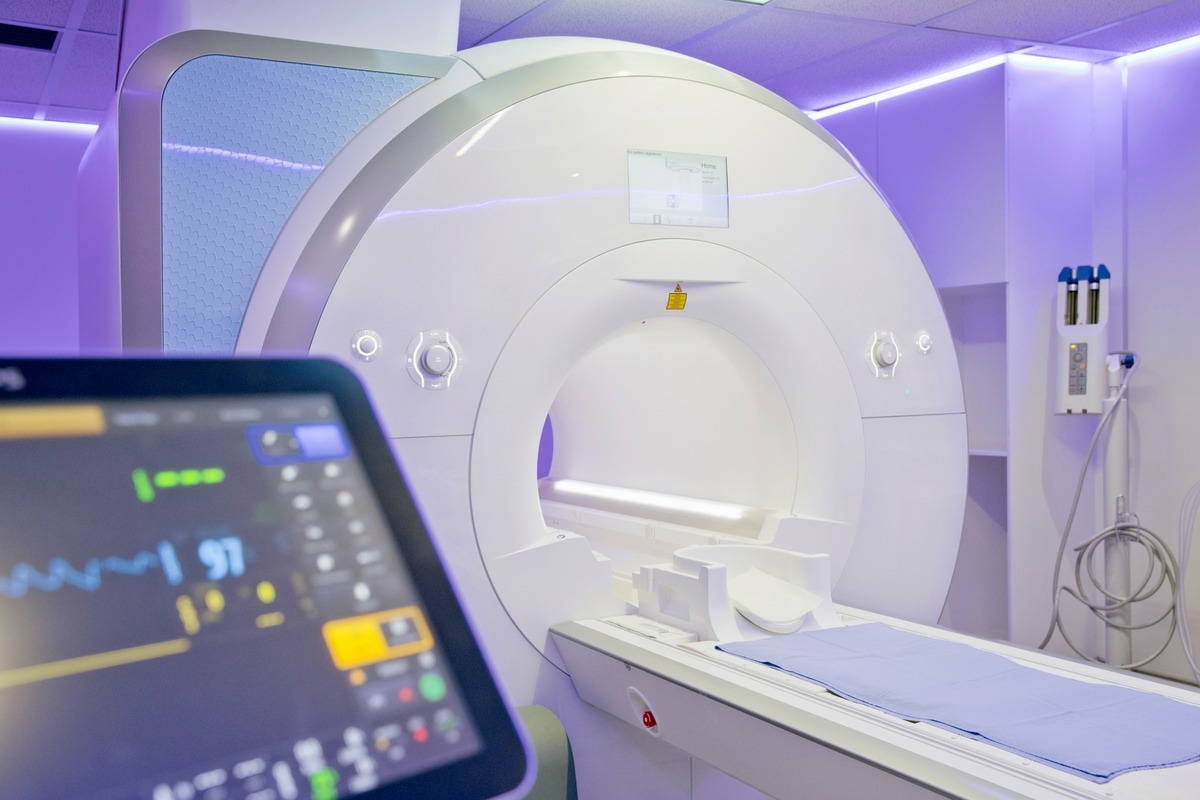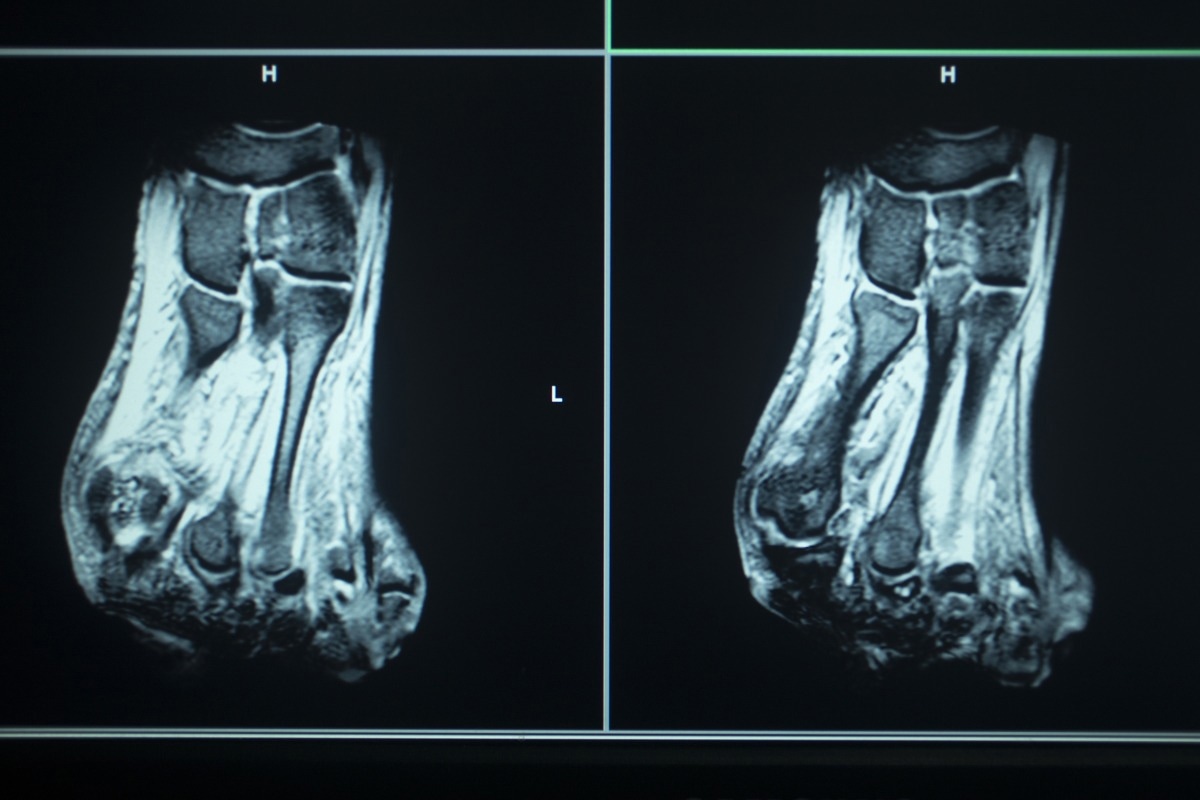Introduction
The role of magnets in diagnosing and treating cancer
The use of magnets in medicine for pain management
Magnetic nanoparticles (MNPs)
Magnetic imaging
References
Further reading
Magnets are defined as substances that can generate a magnetic field. Magnetic fields in modern medicine are widespread due to their physical and chemical properties. As such, there are many uses of magnets in medical applications that range from the use of magnets for retention to their use in brain surgery as a guide for catheters.
Permanent magnets have greater clinical use in dentures, maxillofacial applications, fracture healing, drug delivery systems, orthopedics, and MRI scanners.
 Image Credit: Juice Flair/Shutterstock
Image Credit: Juice Flair/Shutterstock
The role of magnets in diagnosing and treating cancer
Anatomical imaging modes are used predominantly in the clinical setting for the screening, diagnosing, staging, and guidance of cancer treatments. Moreover, they play a role in monitoring patients for recurrence and determining the efficacy of treatment. Magnets used in imaging data are essential in guiding current decision-making.
However, they suffer a drawback as they cannot be used to inform therapeutic decisions about the effect of a specific treatment regimen in relation to a patient's unique tumor biology. Regarding future decision-making, biologically sensitive Imaging techniques can capture the physiology and geometry of tumors.
To this effect, magnetic resonance imaging technologies such as diffusion-weighted (DW-) MRI and dynamic contrast-enhanced (DCE-) MRI can enable the resolution of snapshots of the 3D state of a tumor's 3D state oftentimes overlooked when standard anatomical imaging techniques are used. DW-MRI can report on the cellularity of tumors, whereas DCE-MRI reports on vasculature function; both techniques can correlate with the tumor response to therapy.
In combination with these forms of MRI, positron emission tomography with radiotracers can map receptor status, hypoxia, and glucose metabolism. These magnet-driven sensitive imaging techniques are therefore considered excellent candidates for integration with biophysics to facilitate personalized medicine reporting on the therapeutic response through computer simulations of mathematical models.

 Read Next: Should MRI be Used to Diagnose Prostate Cancer?
Read Next: Should MRI be Used to Diagnose Prostate Cancer?
The use of magnets in medicine for pain management
Magnets offer an alternative therapeutic approach to pain of different types, encompassing foot or back pain resulting from arthritis and fibromyalgia.
Several magnetic products are available and marketed with claims of effectiveness for reducing pain. However, there is a paucity of research investigating the ability of magnets to alleviate pain successfully.
In a recent study conducted in 2017, eight studies of systematic reviews that compared magnet therapy against other conventional treatments for pain treatment showed that magnet therapy was ineffective in relieving pain. Nonetheless, magnets for pain relief are anecdotally touted, but the absence of proven benefits is discouraged in the medical setting.
Magnetic nanoparticles (MNPs)
MNPs have gained recent popularity in the past decade due to their applications in medicine, specifically cancer and biosensing. MNPs have been proven to be efficacious thermoelectric materials, imaging agents, and drug delivery of vehicles. They range between one and 100nm in diameter, and the small size lends them to a diverse range of applications. Among them, they are useful in the biomedical setting as they have diverse physicochemical properties, are easy to prepare, are stable and biocompatible. They have been used as a novel approach to cancer theranostics (the simultaneous or sequential diagnosis and treatment of medical conditions).
Specifically, MNPs are used in hyperthermia treatment, which is an irreversible thermal targeting of cancer cells due to increasing the local temperature of tissue through heat induction. Magnetic hyperthermia is a new cancer treatment; an alternating magnetic field is used to produce heat in suspensions of MNPs in the body. This is efficacious as cancerous cells are predisposed to hypothermia relative to normal cells as their lowered pH results in reduced tolerance to heat (thermotolerance). Baffle, therapeutic heating is applied directly to cancerous cells.
Magnetic imaging
Medical imaging is used routinely to investigate biological mechanisms, monitor disease progression, and in the context of diagnosis. Several imaging techniques are being developed to enhance the resolution of images across magnetic resonance imaging (MRI), computed tomography (CT), position emission tomography (PET), single-photon emission computed tomography (SPECT), ultrasound imaging, photoacoustic (PA)imaging, and optical fluorescence imaging.
MRI is the most favored imaging approach, and ineffective tool for cancer diagnosis owing to its high spatial resolution, high contrast imaging of soft tissues, and results in less exposure to radiation. Nuclear magnetic resonance and MRI function use the same concept. However, MRI uses a strong magnetic field applied to the whole body.
In magnetic cancer theranostics, ultrafine iron oxide nanoparticles are used to track the position of theranostic agents, control the therapy process in real-time, and assess treatment efficacy. The ultrafine iron oxide nanoparticles also function as contrasting agents that can penetrate tumors and provide multimodal imaging. In addition, nanoparticles can self assemble in the acidic tumor environment, preventing them from re-entering circulation. Therefore, they persist inside the tumor over long periods and can enhance imaging resolution.
The thermogenic effect of MNPs has also been used in immunology for photothermal, photodynamic, sonodynamic, and radiotherapies to cause cell death.
Magnets have wide and varied use in medicine; the most established use of magnets are in various imaging modalities and have proven useful in their diagnosis and treatment of several types of disease, and most prolifically in cancer. More novel uses of magnets include magnetic nanoparticles - as contrast agents for MRI, as colloidal agents in cancer magnetic hyperthermia, or as active constituents of drug-delivery platforms. Though there are still limitations to the use of MNPs, progress in this field continues, and it is projected that the use of MNPs will become increasingly integrated into the treatment of both infectious diseases and cancer in the future.
 Image Credit: edwardolive/Shutterstock
Image Credit: edwardolive/Shutterstock
References
- Tatarov I, Panda A, Petkov D, et al. (2011) Effect of magnetic fields on tumor growth and viability. Comp Med.
- Yuksel C, Ankarali S, Yuksel NA. The use of neodymium magnets in healthcare and their effects on health. North Clin Istanb. 2018;5(3):268-273. doi:10.14744/nci.2017.00483.
- Akbarzadeh A, Samiei M, Davaran S. (2012) Magnetic nanoparticles: preparation, physical properties, and applications in biomedicine. Nanoscale Res Lett. doi:10.1186/1556-276X-7-144.
- Ullah Khan A, Chen L, Ge G. (2021) Recent development for biomedical applications of magnetic nanoparticles. Inorg Chem Commun.
Further Reading
Last Updated: Jul 12, 2022